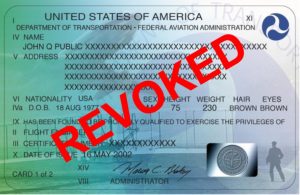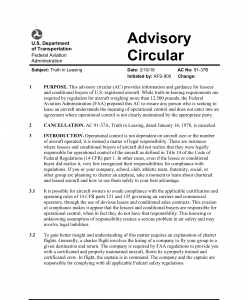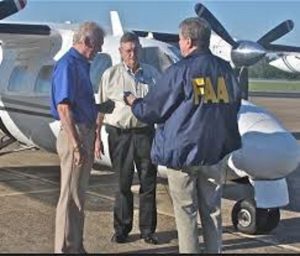The FAA is continuing its special emphasis on investigating and pursuing enforcement action against illegal charter operations. Many of these illegal operations involve leasing arrangements that are not compliant with the regulations, and that are sometimes referred to as “sham leasing” or “disguised charter.”
When the FAA discovers such operations, it does not hesitate to take legal enforcement action against any pilots who operated aircraft on these illegal charter flights. The FAA’s action typically involves an emergency order of revocation immediately revoking all of the pilot’s airman certificates.
While the FAA may then assess a civil penalty against other parties involved in the illegal operations (i.e. the aircraft owner or the aircraft operator), make no mistake – the pilots are the FAA’s first targets. And that is potentially a significant risk.
But before a pilot decides that he or she will simply refuse to operate an aircraft under a lease arrangement, it is important to understand that it is possible to structure leasing arrangements that are fully compliant with the regulations. Legal aircraft leasing structures are put in place every day. Do not let anyone, including the FAA, tell you different.
How Does A Pilot Know Whether A Leasing Structure Is Legal?
First, the pilot needs to learn about and understand both legal and illegal leasing structures. Next, with that education and understanding the pilot needs to perform some due diligence to confirm the legality of the leasing structure for the aircraft he or she will be flying.
What Type of Due Diligence Should A Pilot Conduct?
A pilot needs to do enough to confirm that the aircraft leasing structure and operations are compliant with the regulations. Due diligence tasks a pilot should pursue include the following:
-
Get a copy of Advisory Circular 91-37B Truth in Leasing and review. Although truth in leasing may not apply to the leased aircraft that will be operated, this AC provides a good general understanding of leasing arrangements and operational control requirements;
-
Obtain a copy of the applicable lease agreement for the aircraft to be flown and review. Confirm that the lessee is the party exercising operational control;
-
If Truth-in-Leasing applies under FAR § 91.23, confirm that the lease was filed with the FAA Technical Branch and notice was given to the applicable FAA Flight Standards Office at least 48 hours before the first flight under the lease;
-
If the FAA has issued any Letters of Authorization (“LOA”) for the aircraft, review to confirm that the LOA is issued to the party who will actually be operating the aircraft. This should be the lessee;
-
Enter into a separate pilot services agreement confirming the pilot’s agency on behalf of the aircraft lessee/operator;
-
Although not a regulatory requirement, it also makes sense to review the insurance policy and endorsements issued for the aircraft to confirm that the policy actually covers the operations to be conducted by the lessee; and
-
Make sure the aircraft leasing and operating arrangements passes a “gut check.” If the documentation is correct, are the parties actually operating consistent with the documents? Or are the operations really being conducted as sham leasing or illegal charter? Is a true leasing arrangement in place between aircraft owner and lessee, or is someone in the middle with whom the lessee coordinates all aircraft operations?




 If the due diligence reveals a legitimate leasing structure, then a pilot can fly for the lessee operator with the knowledge that the pilot is not putting his or her airman certificates at risk. Additionally, if the FAA ever asks about the operations (i.e. in connection with a ramp check, or perhaps after an anonymous tip by an unhappy competitor) the pilot will be able show the FAA inspector the due diligence he or she performed and explain how the operations are structured and conducted in compliance with the regulations.
If the due diligence reveals a legitimate leasing structure, then a pilot can fly for the lessee operator with the knowledge that the pilot is not putting his or her airman certificates at risk. Additionally, if the FAA ever asks about the operations (i.e. in connection with a ramp check, or perhaps after an anonymous tip by an unhappy competitor) the pilot will be able show the FAA inspector the due diligence he or she performed and explain how the operations are structured and conducted in compliance with the regulations.